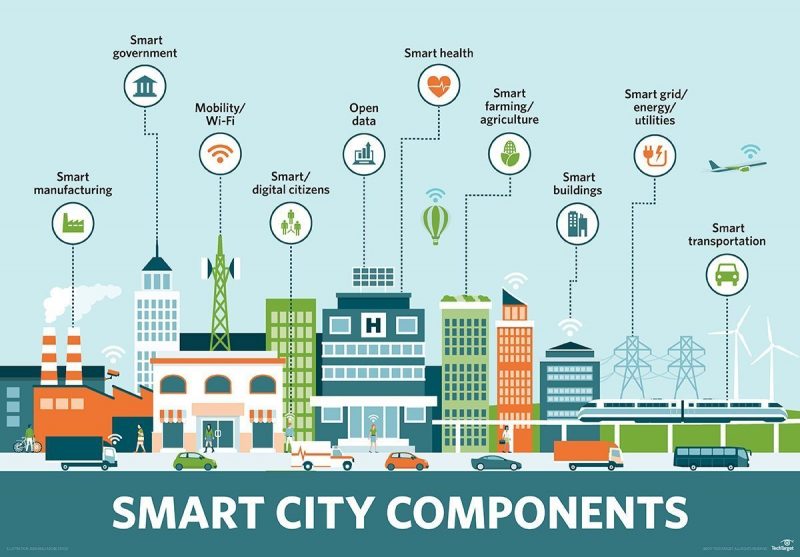Will “Smart Cities” Save Us From Rising Seas?

Image credit: internetofthingsagenda.techtarget.com
The world is becoming more and more urbanized. It is estimated that two thirds of the world’s population will be living in cities by the year 2050. Over the last decade or so, the concept of “smart cites” has been promoted as a solution to a better way of life and to solving problems. Many of the world’s major corporations, leading design firms, and major cities are investing in the concept. Often it is touted as part of the answer to the problem of climate change. On a few occasions, some have suggested that smart cities will help us deal with rising sea level. Before the water starts to rise, we should look at whether this is smart thinking — or not.
What is a ‘smart city’? An article in Forbes magazine said: “Smart cities bring together infrastructure and technology to improve the quality of life of citizens and enhance their interactions with the urban environment.” Wikipedia’s description says:
A smart city is an urban area that uses different types of electronic Internet of things (IoT) sensors to collect data and then use insights gained from that data to manage assets, resources and services efficiently. This includes data collected from citizens, devices, and assets that is processed and analyzed to monitor and manage traffic and transportation systems, power plants, utilities, water supply networks, waste management, crime detection, information systems, schools, libraries, hospitals, and other community services.
The smart city concept integrates information and communication technology (ICT), and various physical devices connected to the IoT network to optimize the efficiency of city operations and services and connect to citizens. Smart city technology allows city officials to interact directly with both community and city infrastructure and to monitor what is happening in the city and how the city is evolving. ICT is used to enhance quality, performance and interactivity of urban services, to reduce costs and resource consumption and to increase contact between citizens and government.
They list over twenty cities that demonstrate or exemplify features of a smart city: Amsterdam, Barcelona, Columbus (Ohio), Copenhagen, Dubai, Dublin, Madrid, Malta, Manchester (UK), Milton Keynes, Moscow, New Songdo (Korea), New York, San Leandro, Santa Cruz, Shanghai, Singapore, Stockholm, Taipei, and several in India. Looking at the list, it’s clear that not all those cities are fully compliant. Still, it’s good that they are looking ahead to be more efficient and connected.
So, what about climate change, flooding, and rising sea level? Is there any evidence or rationale that being a sensor-heavy, data-smart, metropolis is a path forward as water levels get higher and higher this century as the ice sheets on Greenland and Antarctica melt at a faster pace? Only a little.
A highly monitored and interconnected city does have potential efficiency advantages in terms of transportation, power generation and usage, city services, and responding to problems and crises. They can most likely be more energy efficient and make better use of renewable sources of energy. Water use and conservation can surely be improved, including the reduction of leaks and tracking of broken pipes. During flooding from heavy rain, there are possible benefits in terms of water control, flood sensing, diversion of traffic, emergency services and even evacuation. In other words, for reducing greenhouse gas emissions and dealing with intermittent flood events, there are likely some good benefits to smart cities. Smart cities are good but there are limits; it will take more than that to prepare for and cope with rising seas.
As base sea level gets higher and higher over the course of this century and into the next, due to the ice sheets melting in a warming world, smart sensors, interconnectedness, and mass transit will not truly solve the problem. As thousands of cities and smaller coastal communities face the growing clarity that the water is rising to levels not experienced in human civilization, we are going to have to be smart in addition to the data driven efficiencies of “smart cities.” Sea walls, barriers and pumps may buy some time, but ultimately, we need to elevate structures and infrastructure, perhaps put things on floats, and in many cases, eventually move to higher ground. It’s the smart thing to do.
